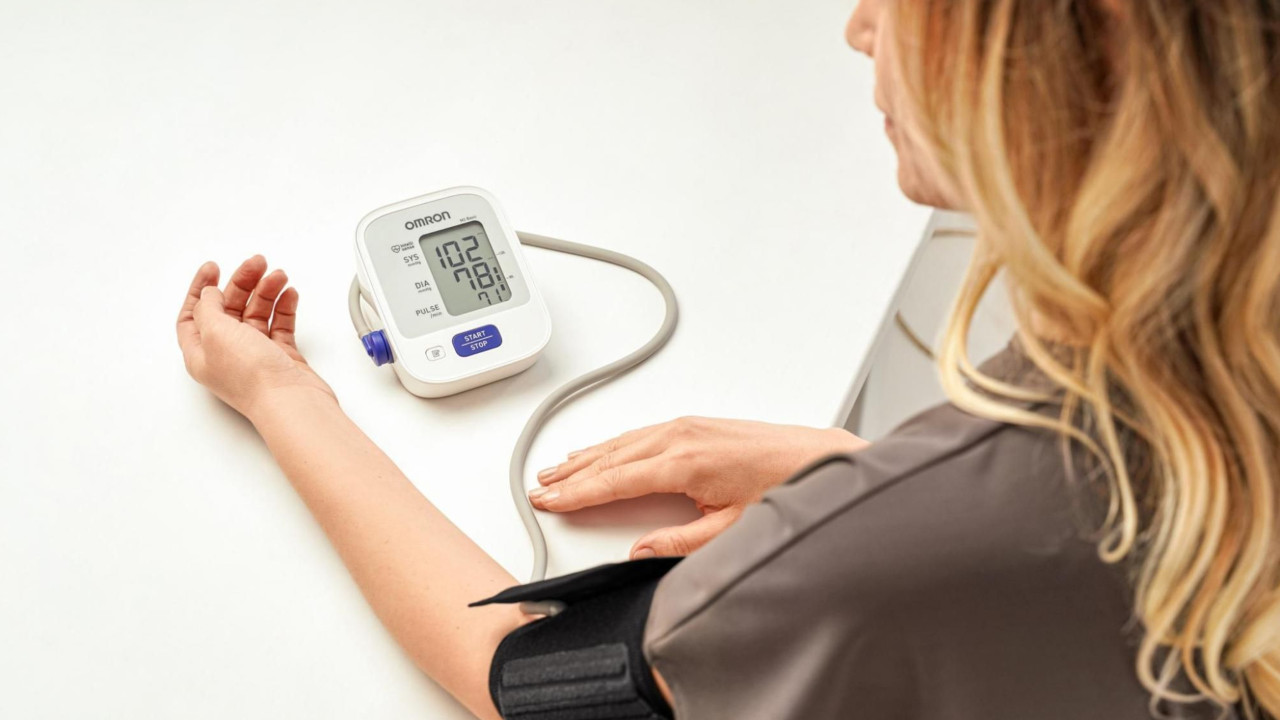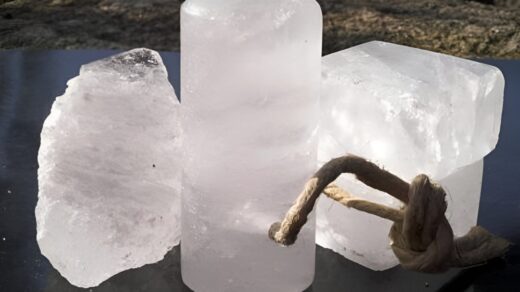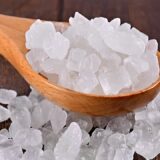Ayurvedic Treatment for (LBP) Low Blood Pressure
Low blood pressure, also known as hypotension, occurs when the blood pressure falls below the normal range. It can cause various symptoms such as dizziness, fatigue, and fainting. While mild hypotension often doesn’t require treatment, persistent low blood pressure can significantly impact daily life and overall health.
Understanding the underlying causes and effectively managing hypotension is crucial for maintaining well-being. This article will provide an overview of low blood pressure, highlight the importance of its management, and delve into the Ayurvedic perspective on treatment.
Overview of Low Blood Pressure
Low blood pressure is characterized by insufficient blood flow to the body’s organs and tissues. It can be caused by various factors including dehydration, certain medications, heart problems, and endocrine disorders. Symptoms may vary from person to person but commonly include:
- Dizziness or lightheadedness
- Fatigue
- Blurred vision
- Nausea
- Difficulty concentrating
- Rapid heart rate
In severe cases, hypotension can lead to shock, which is a medical emergency.
Importance of Managing Hypotension
Effective management of hypotension is essential for several reasons:
- Improved quality of life: By addressing the underlying causes and managing symptoms, individuals can experience a significant improvement in their daily activities and overall well-being.
- Prevention of complications: Untreated hypotension can lead to serious complications such as falls, injuries, and organ damage.
- Enhanced cognitive function: Adequate blood flow to the brain is crucial for optimal cognitive function. Managing hypotension can help improve focus, memory, and alertness.
Ayurvedic Approach to Treatment
Ayurveda, an ancient Indian system of medicine, offers a holistic approach to managing low blood pressure. It focuses on balancing the body’s doshas (Vata, Pitta, and Kapha) to restore overall health. Key principles of Ayurvedic treatment for hypotension include:
- Diet and lifestyle modifications: Incorporating specific foods, herbs, and lifestyle changes to support blood pressure regulation.
- Herbal remedies: Utilizing natural herbs with blood pressure-balancing properties.
- Panchakarma: Undergoing detoxification and rejuvenation therapies to improve overall health.
By combining these elements, Ayurveda aims to address the root cause of hypotension and promote long-term well-being.
What is Low Blood Pressure?
Low blood pressure, or hypotension, occurs when the blood pressure drops below the normal range. Blood pressure is the force of blood pushing against the walls of your arteries. When it’s too low, it can’t effectively circulate blood to your organs and tissues.
Common Causes of Hypotension
- Dehydration: Not drinking enough fluids.
- Medication side effects: Certain medications can lower blood pressure.
- Heart conditions: Problems with the heart’s pumping ability or heart rhythm.
- Endocrine disorders: Issues with hormones that regulate blood pressure.
- Pregnancy: Hormonal changes and increased blood volume can affect blood pressure.
- Blood loss: From injury or internal bleeding.
- Infection: Severe infections can lead to low blood pressure.
- Allergic reactions: Severe allergic reactions (anaphylaxis) can cause a rapid drop in blood pressure.
- Nervous system disorders: Conditions affecting the nerves that control blood vessels.
Symptoms Associated with Low Blood Pressure
- Dizziness or lightheadedness
- Fatigue
- Blurred vision
- Nausea
- Difficulty concentrating
- Rapid heart rate
- Fainting (in severe cases)
It’s important to note that not everyone with low blood pressure will experience symptoms.
Ayurveda’s Perspective on Low Blood Pressure
Doshas and Their Role in Blood Pressure Regulation
Ayurveda, an ancient Indian system of medicine, views the human body as a microcosm of the universe, governed by three fundamental energies or doshas:
- Vata: Governs movement, circulation, and nervous system. An imbalance in Vata can lead to irregular heart rate and blood pressure fluctuations.
- Pitta: Associated with metabolism, digestion, and transformation. Pitta imbalance can affect blood circulation and blood pressure.
- Kapha: Relates to structure, lubrication, and immunity. Kapha imbalance can contribute to sluggish circulation.
A harmonious balance of these doshas is essential for optimal health, including blood pressure regulation.
Ayurvedic Diagnosis of Hypotension
Ayurveda focuses on understanding the root cause of a condition rather than just treating the symptoms. A qualified Ayurvedic practitioner will conduct a comprehensive assessment, including:
- Pulse diagnosis: Analyzing the strength, rhythm, and quality of the pulse.
- Tongue diagnosis: Observing the tongue’s color, coating, and shape.
- Overall health assessment: Considering dietary habits, lifestyle, and mental-emotional state.
Based on this evaluation, the practitioner determines the predominant dosha imbalance contributing to hypotension.
Importance of Balancing Vata Dosha
In most cases of hypotension, Vata dosha is primarily involved. Vata governs circulation, and its imbalance can lead to weak and irregular heartbeats, affecting blood pressure. Therefore, balancing Vata is crucial for managing hypotension.
Ayurvedic Remedies for Low Blood Pressure
Dietary Recommendations
A balanced diet plays a crucial role in managing low blood pressure. Ayurveda emphasizes consuming foods that balance the Vata dosha, which is often responsible for hypotension.
Foods to Include
To help stabilize low blood pressure, include the following foods in your diet:
- Root Vegetables: Foods like sweet potatoes, carrots, and beets are grounding and nourishing, making them ideal for balancing Vata.
- Whole Grains: Oats, brown rice, and quinoa are excellent sources of energy and provide sustained nourishment, which can help maintain stable blood pressure.
- Warm, Cooked Foods: Soups, stews, and porridge are easy to digest and help maintain warmth in the body, which is beneficial for those with low blood pressure.
- Healthy Fats: Incorporate ghee, sesame oil, and avocado into your meals to provide sustained energy and balance Vata.
- Natural Sweeteners: Honey and jaggery can be used in moderation to add sweetness, which is pacifying for Vata.
Foods to Avoid
Certain foods can aggravate Vata and should be minimized or avoided:
- Cold and Raw Foods: Salads, cold drinks, and raw vegetables can increase Vata and should be limited, especially in colder weather.
- Dry Foods: Crackers, dried fruits, and popcorn can exacerbate dryness in the body, leading to an imbalance in Vata.
- Excessively Spicy or Bitter Foods: Foods that are too spicy or bitter, such as hot peppers or bitter greens, can disturb Vata and should be consumed sparingly.
Herbal Treatments
Ayurveda offers several herbs that can help manage low blood pressure by balancing the body’s internal energies and improving circulation.
1. Ashwagandha
- Benefits: Ashwagandha is a well-known adaptogen that helps in reducing stress, which can stabilize blood pressure. It supports overall vitality and balances Vata.
- Usage: You can take Ashwagandha in the form of powder, capsules, or as part of herbal formulas. It’s best to consult with an Ayurvedic practitioner for the correct dosage.
2. Licorice Root (Mulethi)
- Benefits: Licorice root is effective in boosting blood pressure naturally. It is particularly useful for individuals with chronic low blood pressure.
- Usage: Licorice can be taken as a tea or in powder form. However, it should be used under supervision, as excessive use can lead to elevated blood pressure.
3. Ginger (Adrak)
- Benefits: Ginger is a warming herb that helps improve circulation and can alleviate symptoms like dizziness and nausea associated with low blood pressure.
- Usage: Fresh ginger can be added to meals, or ginger tea can be consumed daily to help manage hypotension.
- Lifestyle Modifications: Lifestyle changes are essential in Ayurveda for managing low blood pressure, as they help in balancing the doshas and improving overall well-being.
Yoga and Pranayama
- Benefits: Yoga postures and pranayama (breathing exercises) can help in stabilizing blood pressure by calming the nervous system and improving blood circulation.
- Recommended Practices: Gentle yoga poses such as Savasana (Corpse Pose) and Viparita Karani (Legs-Up-the-Wall Pose) are beneficial. Pranayama techniques like Nadi Shodhana (Alternate Nostril Breathing) can help in balancing the Vata dosha.
Meditation and Stress Management
- Benefits: Stress is a major factor that can aggravate Vata and lead to low blood pressure. Regular meditation helps in calming the mind, reducing stress, and promoting overall balance.
- Practices: Daily meditation, mindfulness practices, and techniques like guided relaxation can be incorporated into your routine.
Ayurvedic Therapies
Ayurvedic therapies are designed to balance the body’s energies and promote overall health, making them effective in managing low blood pressure.
1.Abhyanga (Oil Massage)
- Benefits: Abhyanga is a traditional Ayurvedic oil massage that nourishes the body and helps in grounding Vata. The warm oil penetrates the skin, improving circulation and stabilizing blood pressure.
- Practice: Warm sesame oil is commonly used for Abhyanga. It can be self-administered at home or done by an Ayurvedic practitioner. Regular practice is recommended for best results.
2. Shirodhara
- Benefits: Shirodhara is a therapy where warm oil is poured steadily on the forehead. It deeply relaxes the nervous system, helping to balance Vata and indirectly supporting healthy blood pressure levels.
- Practice: Shirodhara is typically performed in a clinical setting by a trained Ayurvedic therapist. It is often recommended for those with Vata imbalances, including low blood pressure.
These Ayurvedic remedies, when combined with a balanced diet and lifestyle, can effectively help in managing low blood pressure. It’s important to consult with an Ayurvedic practitioner to tailor the treatment to your specific needs.
Dietary Guidelines for Managing Low Blood Pressure
Importance of Balanced Nutrition
A balanced diet is crucial for maintaining overall health, including blood pressure regulation. Ayurveda emphasizes the importance of consuming fresh, whole foods that nourish the body and mind. By providing essential nutrients, a well-balanced diet can help support blood pressure levels.
Hydration Tips
Adequate hydration is essential for preventing low blood pressure. Water is the foundation of life, and maintaining proper fluid levels helps to regulate blood volume and pressure. It is recommended to drink plenty of water throughout the day and to avoid excessive caffeine and alcohol, which can contribute to dehydration.
Specific Foods Beneficial for Hypotension
Ayurveda suggests incorporating certain foods to support blood pressure health:
- Sweetening agents: Honey is preferred over refined sugar.
- Grains: Include whole grains like brown rice, quinoa, and oats in your diet.
- Legumes: Lentils, chickpeas, and kidney beans are excellent sources of protein and fiber.
- Fruits and vegetables: Rich in vitamins, minerals, and antioxidants, fruits and vegetables like bananas, apples, spinach, and beetroot are beneficial.
- Dairy products: Milk, yogurt, and ghee (clarified butter) are considered nourishing for the body.
- Spices: Ginger, cardamom, and cinnamon can be added to meals to enhance taste and support digestion.
Note: While these foods are generally beneficial, individual needs may vary. It’s essential to consult with a healthcare professional or Ayurvedic practitioner for personalized dietary advice.
Herbs and Spices for Low Blood Pressure
Ayurveda offers a treasure trove of natural remedies for various health conditions, including low blood pressure. Let’s explore some key herbs and spices:
1. Ashwagandha: The Rejuvenating Herb
Often referred to as Indian ginseng, Ashwagandha is renowned for its adaptogenic properties. It helps the body adapt to stress, improves overall vitality, and supports adrenal function. By strengthening the body’s response to stress, Ashwagandha can indirectly help stabilize blood pressure.
2. Licorice Root: Nature’s Blood Pressure Booster
Licorice root has been used for centuries to address various health issues. It contains compounds that can help regulate blood pressure by balancing fluid levels and supporting adrenal function. However, it’s essential to consume licorice root in moderation and under the guidance of a healthcare professional.
3. Ginger: Warming Up the Circulatory System
Ginger is a versatile spice known for its warming properties. It can help stimulate circulation, which is beneficial for individuals with low blood pressure. Additionally, ginger has anti-inflammatory properties that can support overall cardiovascular health.
Note: While these herbs and spices offer potential benefits, it’s crucial to consult with an Ayurvedic practitioner or healthcare provider before incorporating them into your routine, especially if you have underlying health conditions or are taking medications.
Lifestyle Changes for Better Blood Pressure Control
Importance of Regular Exercise
Regular physical activity is a cornerstone of managing blood pressure. Exercise helps to strengthen the heart, improve circulation, and reduce stress. Aim for at least 150 minutes of moderate-intensity exercise or 75 minutes of vigorous-intensity exercise per week. Activities such as brisk walking, swimming, cycling, and dancing are excellent choices.
The Role of Yoga in Balancing Blood Pressure
Yoga offers a holistic approach to managing blood pressure. It combines physical postures (asanas), breathing exercises (pranayama), and meditation.
Yoga helps to reduce stress, improve circulation, and promote relaxation, all of which contribute to blood pressure balance. Certain yoga poses, such as downward-facing dog and child pose, are particularly beneficial for calming the mind and body.
Stress Management Techniques in Ayurveda
Ayurveda places great emphasis on stress management. Chronic stress can elevate blood pressure, so incorporating relaxation techniques into your daily routine is essential. Here are some Ayurvedic stress management techniques:
Meditation: Regular meditation helps to calm the mind and reduce anxiety.
- Pranayama: Breathing exercises, such as deep breathing and alternate nostril breathing, can help regulate the nervous system.
- Abhyanga: Self-massage with warm oil can relax the body and mind.
- Shirodhara: A gentle stream of warm oil is poured onto the forehead to induce relaxation.
By combining these lifestyle changes with a balanced diet and appropriate herbal remedies, you can effectively manage low blood pressure and improve your overall well-being.
Ayurvedic Therapies for Hypotension
1. Abhyanga: Nourishing the Body Through Oil Massage
Abhyanga is a full-body oil massage that is deeply nourishing and rejuvenating. It involves the rhythmic application of warm, medicated oil on the entire body. For hypotension, specific oils like coconut, sesame, or almond oil infused with herbs like Ashwagandha can be used.
Benefits of Abhyanga for hypotension:
- Improves circulation: By stimulating blood flow throughout the body.
- Relaxes the nervous system: Reduces stress and anxiety, which can contribute to blood pressure fluctuations.
- Nourishes the skin: Provides deep hydration and promotes overall skin health.
- Balances the doshas: Helps to restore harmony within the body.
2. Shirodhara: Calming the Mind to Regulate Blood Pressure
Shirodhara is a specialized Ayurvedic treatment where a continuous stream of warm, medicated oil is poured on the forehead. This therapy is deeply relaxing and has a profound impact on the mind and nervous system.
Benefits of Shirodhara for hypotension:
- Reduces stress and anxiety: Promotes mental calmness and relaxation.
- Improves sleep: Helps to regulate sleep patterns, which can be disrupted by low blood pressure.
- Nourishes the head and scalp: Provides deep conditioning and promotes hair health.
- Balances the doshas: Specifically targets the Vata dosha, which is often imbalanced in hypotension.
Note: While these therapies are generally safe, it’s essential to consult with a qualified Ayurvedic practitioner before undergoing any treatment, especially if you have underlying health conditions.
Preventive Measures in Ayurveda
Ayurveda emphasizes prevention over cure. Here are some key preventive measures:
Avoiding Sudden Posture Changes
Rapid changes in posture, such as standing up quickly, can lead to a sudden drop in blood pressure. To avoid this:
- Rise slowly: Take your time when getting up from a sitting or lying position.
- Engage core muscles: This can help stabilize blood pressure.
Regular Health Check-ups
Ayurvedic check-ups, or consultations, involve a comprehensive assessment of your overall health. This includes:
- Pulse diagnosis: Analyzing the strength, rhythm, and quality of the pulse.
- Tongue diagnosis: Observing the tongue’s color, coating, and shape.
- Overall health assessment: Considering dietary habits, lifestyle, and mental-emotional state.
Regular check-ups can help identify potential imbalances early on.
Importance of Seasonal Routines (Ritucharya)
Ritucharya involves aligning your lifestyle with the changing seasons. This helps maintain balance within the body. By following seasonal dietary and lifestyle recommendations, you can prevent imbalances that might contribute to health issues.
Common Myths About Low Blood Pressure in Ayurveda
Ayurveda, like any ancient system of medicine, has its share of misconceptions. Let’s dispel some common myths about low blood pressure in Ayurveda:
Myth 1: Low Blood Pressure is Less Serious Than High Blood Pressure
Truth: While often overshadowed by hypertension, low blood pressure can lead to significant health issues, including dizziness, fatigue, and in severe cases, shock. Ayurveda emphasizes balance, and both high and low blood pressure are deviations from optimal health.
Myth 2: Ayurveda Only Treats Chronic Conditions
Truth: Ayurveda offers effective remedies for both acute and chronic conditions. Low blood pressure, while often chronic, can be managed and improved with timely Ayurvedic interventions.
Myth 3: All Oils Are Beneficial for Low Blood Pressure
Truth: While many oils have therapeutic properties, not all are suitable for hypotension. The choice of oil depends on the individual’s constitution (Prakriti) and the underlying cause of low blood pressure. Incorrect oil selection can exacerbate the condition.
Myth 4: Ayurveda is Only for Relaxation
Truth: While relaxation is a crucial aspect of Ayurveda, it’s a comprehensive system that addresses physical, mental, and spiritual well-being. It offers effective therapeutic measures for various health conditions, including low blood pressure.
Myth 5: Ayurvedic Treatments Take a Long Time to Show Results
Truth: While some deep-rooted imbalances may require consistent Ayurvedic care, many individuals experience improvements in low blood pressure symptoms relatively quickly. The combination of diet, lifestyle, herbs, and therapies can yield noticeable results within a reasonable timeframe.
By understanding these myths and the underlying Ayurvedic principles, you can make informed decisions about your health and well-being.
These Ayurvedic remedies, when combined with a balanced diet and lifestyle, can effectively help in managing low blood pressure. It’s important to consult with an Ayurvedic practitioner to tailor the treatment to your specific needs.


























I especially enjoy beet juice recipes which help you to optimize the use of oxygen stimulating red blood cells in your blood stream.
Beet juice also provides you with an instant source of energy because they are so rich in carbohydrates.
The pigment that gives beetroot juice its red color is called betaine. Betaine presents you with some of the main benefits of beet juice because it known as a terrific antioxidant.
Nice article about low blood pressure. AVN arogya ayurvedic hospital provides natural treatment for back pain and severe back pain